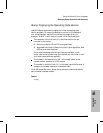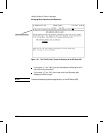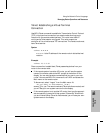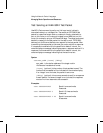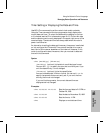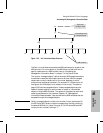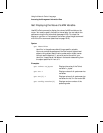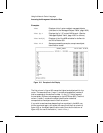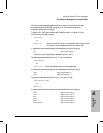
The Get, List, and Reset commands use MIB pathnames for access to the
MIB structure. For more details on the MIB structure itself and how to
specify a pathname to a MIB variable, refer to ‘‘Accessing the
Management Information Base’’ in chapter 7 of the User’s Guide.
The router’s “managed objects” define the major MIB categories and are
the software resources that enable network services. Which managed
objects are currently resident within the router depends on which
protocols and services are enabled. (For example, if X.25 service is not
configured, the X.25 object is not resident in the router.) The table on
page 16-32 lists the managed objects. These managed objects are the
heads of objects, leading in some number of levels, or intermediate
objects, to single MIB variables. The names of the objects at each level
make up pathnames for the variables. Chapter 18, ‘‘Management
Information Base Variables’’ lists and defines the MIB variables that are
accessed through the managed objects.
Note Certain managed objects include a slot number in their pathnames. On
the HP Router 650, the slot number corresponds to the slot containing
the desired MIB activity (slots 2 through 5). On HP series 200 and 400
routers, the slot number is always ‘‘1’’.
buf
msg
miss
pkt
[1]
size
min
free
initmiss
size
min
free
init
High-Level
managed object
Intermediate-Level
managed objects
MIB variables
Figure 16-2. "buf" Information Base Structure
NCL
Commands
16
Using the Network Control Language
Accessing the Management Information Base
16-31



